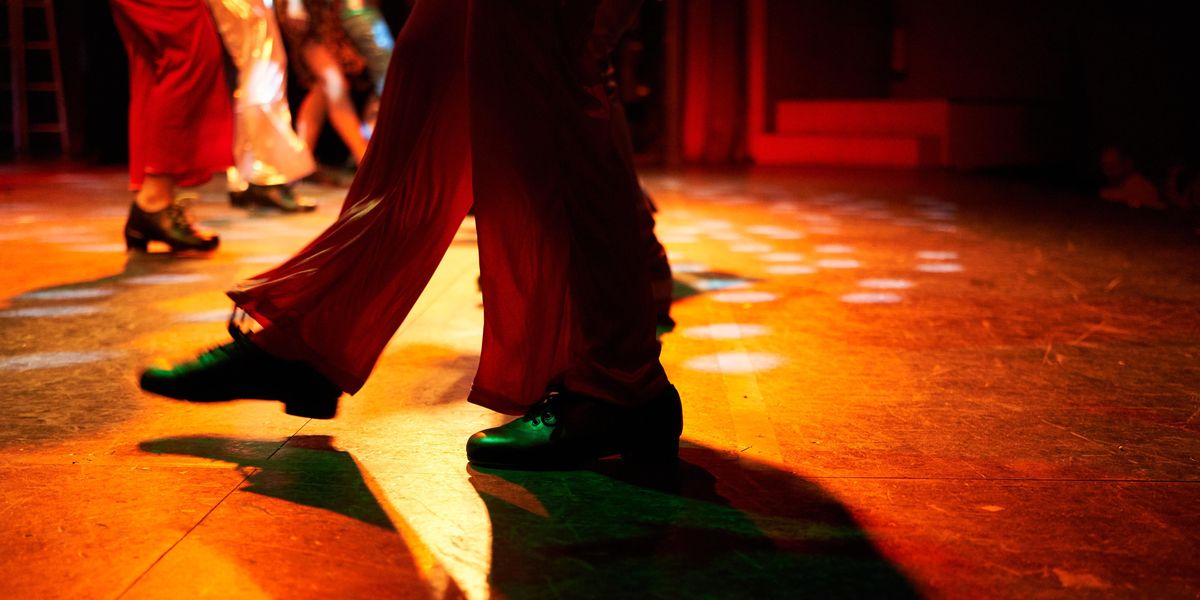How Percussive Dancers Can Avoid Injury
Injury prevention is crucial for dancers. But compared to the resources focusing on dance styles like ballet, modern and contemporary, guidance for dancers specializing in percussive forms—for example, tap, flamenco or kathak—is arguably less common. What kinds of injuries tend to affect these dancers, and how can they be avoided?
What Are the Most Common Injuries?
Foot, knee and ankle ailments are common in percussive styles due to the repetitive and high-impact foot movements, says Sarah Plumer-Holzman, DPT, OCS, a physical therapist at the Harkness Center for Dance Injuries at NYU Langone Orthopedic Hospital.
Plumer-Holzman often sees tendinopathy (chronic) or tendinitis (acute) of the peroneal or posterior tibial tendons, which are muscles that support the ankle joint. “Tendinitis is when it first happens and you have inflammation in the tendon,” she says. “Tendinopathy is when it’s been going on for about six weeks and the cells have started to change, and it becomes more chronic.” Early treatment is key. “Usually, people wait until it becomes tendinopathy before they actually come and get help, and then it’s a little harder to deal with.”
Percussive dancers who train in a heeled shoe without properly stretching the calf muscles are prone to Achilles tendinitis, due to the constant contraction of the calves in a shortened position. “Those dancers can develop a lot of tightness in the calf, and the Achilles is what attaches your calf muscle to the bone on the heel,” says Plumer-Holzman.
Working primarily in heeled shoes may also lead these dancers to experience plantar fasciitis, an inflammation of the tissue connecting the toes to the heel bone. Ankle sprains—which typically stem from a traumatic event, rather than occurring gradually—are also a risk, since dancing in this type of shoe places the foot in a vulnerable position.
Though sometimes associated with dance styles involving a lot of jumping, stress reactions and fractures of the foot or lower leg can also affect percussive dancers. “Stress reactions are what happen before you have a fracture,” says Plumer-Holzman. Bones are a very dynamic tissue that are constantly breaking down and rebuilding, and if an activity creates more breakdown than buildup, a bone can be weakened to the point of stress reaction or fracture formation.
Tap dancers are particularly susceptible to injuries in the kneecap, due to movements that require holding the hip and knee in a static position while the feet move quickly. This can create tightness in the quad and muscles attached to the IT band, which may lead to compression of the kneecap.
Ways You Can Stay Healthy
Professional Assessment
Visit a dance medicine specialist to get a sense of where you might be at risk for injury. The Harkness Center for Dance Injuries provides free injury-prevention assessments. “We look at a set of objective measures to see where they are out of the norm for a dancer,” says Plumer-Holzman. “We’re looking at, Does this dancer have the range of motion that they need for the dance form that they’re doing? If the dancer doesn’t have that range of motion, we need to address that. Then, we assess coordination. We take that information and create a program that addresses those deficits in that dancer.”
Foot Care
“Wear supportive footwear, like a good walking shoe that has arch support, so that when you’re not stressing your feet with dance, your feet are taken care of,” says Plumer-Holzman. “If you can’t afford to buy an expensive pair of shoes that gives you optimal arch support, you can look at some kind of good insert to put in a flat shoe.” Also, she notes, make sure the shoes you’re dancing in fit well.
Warm-Up
Give yourself time to properly warm up before rehearsals, classes and informal practice sessions. “In ballet and contemporary dance, there’s more of a warm-up built into any class you would take that goes through a broad range of motion,” says Plumer-Holzman. “Percussive dancers should make sure to still get a diverse warm-up before they dance. That helps them to stay conditioned, and can be part of their cross-training.”
Go through the full range of motion of your body, focusing on the ankles, knees and hips. “Steer clear of just stretching beforehand,” Plumer-Holzman advises. “Stretching is not a warm-up; that is something to save for your cooldown.”
“A lot of the work that percussive dancers do requires a tremendous amount of core strength to allow for the legs to move so quickly, because they need a good, stable base to move from,” Plumer-Holzman adds. To strengthen and prepare the core for movement prior to a class, rehearsal or performance, she recommends activating your abdominal muscles while moving your legs, to help with trunk stability. A suggested exercise is to lie on your back with your feet on the floor, drawing your navel to your spine and marching your legs without moving your pelvis.
Plumer-Holzman also suggests bridging to activate the core and glutes while lengthening the quads. From the same position as described in the marching exercise, press your hips upward into a bridge without arching your back. “Any exercises that focus on the abdominals, glutes, hip abductors, hip rotators can really help wake muscles up and get you ready to be active,” she says.
After working against the floor while lying down, Plumer-Holzman advises transitioning to a standing position. “Something where you’re moving through the spine, even if there isn’t as much spinal motion as you might see in other dance forms, but you certainly need to move through motions of the spine to fully warm the body up,” she says. She also suggests movements such as knee bends, heel raises, pliés, elevés and tendus to help warm larger muscle groups and begin working on coordination. To further warm up the feet, knees and hips, Plumer-Holzman recommends a light jog or other form of moderate aerobic activity.
Cooldown
For an appropriate cooldown, stretch and find a way to relax the muscles you’ve used the most in your dancing. “The type of movement required of, say, a tap dancer, where there is a lot of very dynamic, fast movement, can develop a lot of tightness in the calves,” says Plumer-Holzman. It is important to stretch the quads and hip flexors after a class or rehearsal to help minimize the tension that can develop from training.
Cross-Training
An aerobic workout—if only two or three times per week for 20 to 30 minutes—is important to offset the start-and-stop pattern of most dance classes, rehearsals and performances, says Plumer-Holzman. “You need to have 20 minutes of elevated heart rate to get the aerobic benefits,” she says. Bike riding, running and fast walking can be beneficial options for dancers.




